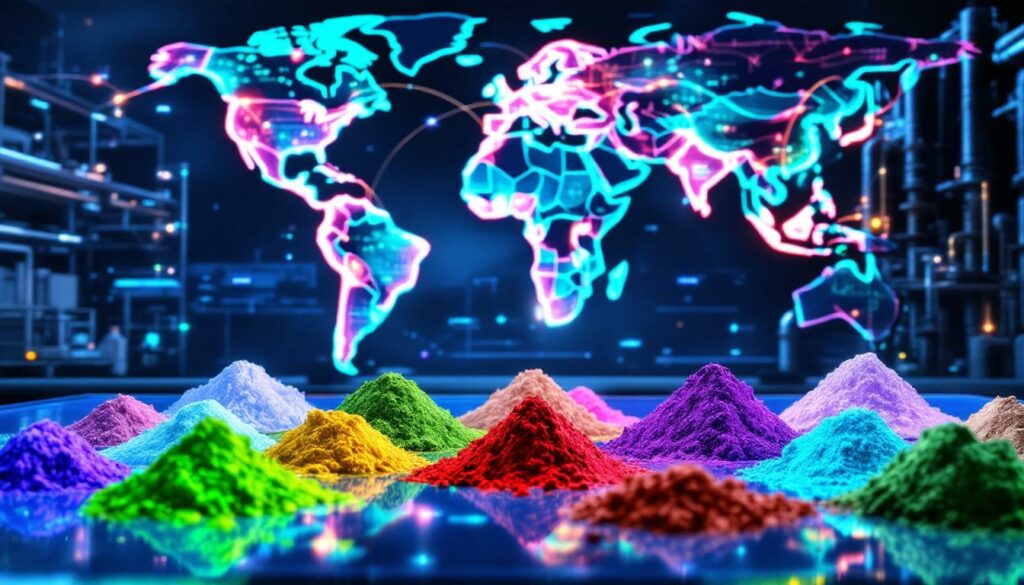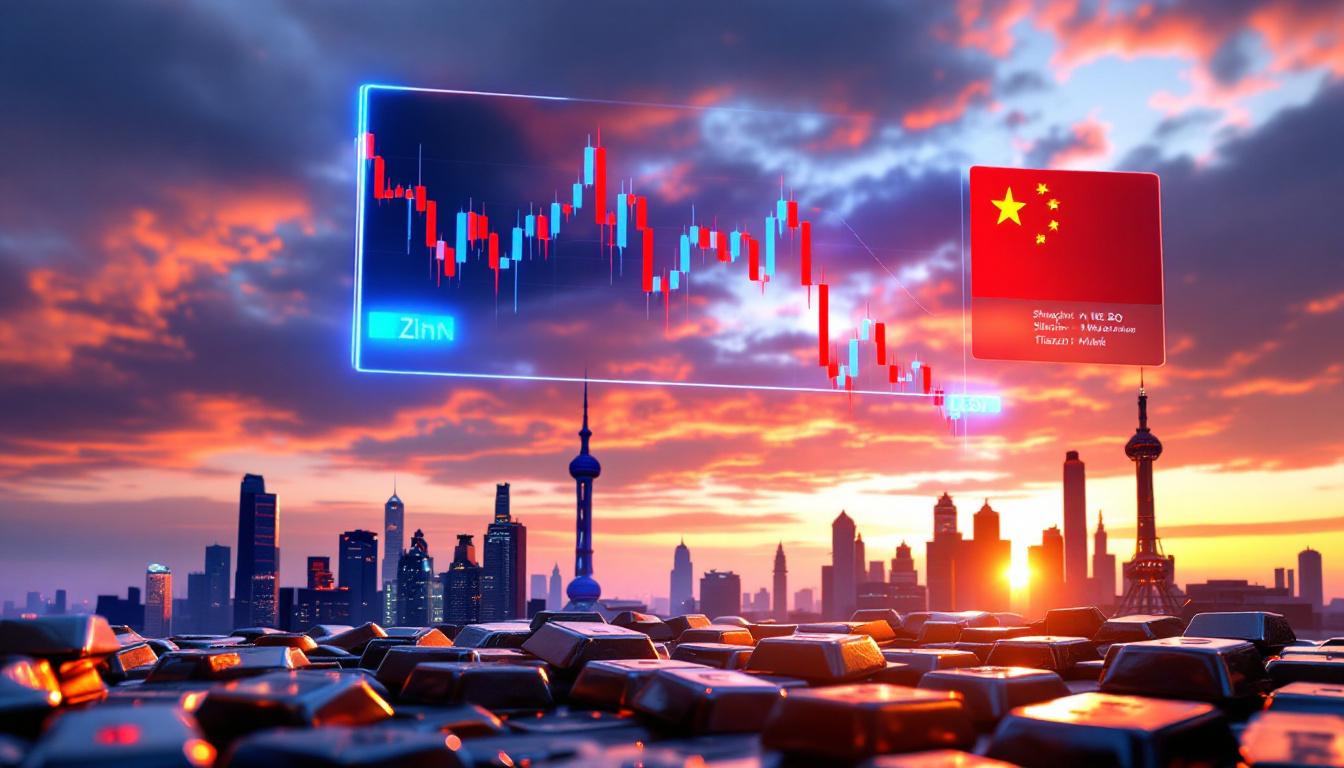Why Are Rare Earth Elements Critical to Modern Industry?
Rare earth elements (REEs) comprise a group of 17 metallic elements on the periodic table that, despite their name, are relatively abundant in Earth's crust. What makes them "rare" is the scarcity of economically viable deposits and the complex processing required to transform them into usable materials. These elements have become indispensable in modern manufacturing, particularly for high-tech and green energy applications.
The Technological Foundation of Modern Innovation
Rare earth elements serve as essential components in technologies that define our modern world. Neodymium and praseodymium create powerful permanent magnets used in electric vehicle motors, wind turbine generators, and countless electronic devices. Dysprosium and terbium enable these magnets to maintain performance at high temperatures, making them crucial for demanding applications.
Key applications include:
- Electric vehicle drive motors and batteries
- Wind turbine generators
- Smartphones, computers, and other consumer electronics
- Medical imaging equipment (MRI machines)
- Defense systems including precision-guided weapons
- Catalytic converters and petroleum refining
According to the U.S. Geological Survey's 2024 Mineral Commodity Summaries, a single F-35 fighter jet requires approximately 417 kilograms of rare earth materials, highlighting their strategic importance for national security.
China's Dominance Creates Global Vulnerability
The rare earth supply chain faces a critical vulnerability: China controls approximately 70% of global rare earth reserves and dominates processing capabilities. This concentration of power has created significant concerns for Western nations, particularly as geopolitical tensions impact global supply chains.
Mike Crabtree, CEO of Saskatchewan Research Council, emphasized this vulnerability: "China's control of rare earths is a wake-up call… If we don't create a non-Chinese supply chain, we are always at risk." (MINING.com, July 9, 2025)
In April 2025, China implemented export controls on dysprosium and terbium, two elements crucial for high-performance magnets. This move sent shockwaves through manufacturing sectors dependent on these materials and underscored the urgent need for supply chain diversification.
How Are Construction Delays Affecting North American Rare Earth Processing?
The push to establish rare earth processing capabilities outside China faces significant challenges, as evidenced by recent setbacks at one of North America's most promising facilities.
Saskatchewan Research Council's Production Setbacks
The Saskatchewan Research Council (SRC) facility in Canada, designed to be one of North America's few independent rare earth processors, has significantly scaled back its 2025 production targets due to construction delays. Initially planning to process 400 metric tons of rare earth elements annually by 2025, the facility now expects to produce only about 100 tons this year.
This 75% reduction represents a significant setback for North American manufacturing, as the planned 400-ton annual capacity would have been sufficient to power approximately 500,000 electric vehicles (based on an average of 0.8kg REEs per EV motor, according to Adamas Intelligence, 2024).
Supply Chain Disruptions Extending Project Timelines
The delays stem directly from post-pandemic supply chain disruptions that continue to plague industrial projects worldwide. According to SRC Chief Executive Officer Mike Crabtree, equipment that would typically be available within 5-6 weeks has experienced delivery delays of 9-12 months.
"Post-Covid supply chain issues severely impacted equipment delivery timelines," Crabtree explained to MINING.com in July 2025. These disruptions have pushed the facility's full operational capacity to late 2026 instead of the original 2022 target—a four-year delay for a project considered critical to North American industrial security.
Cascading Effects on Downstream Industries
The production shortfall creates immediate challenges for manufacturers who had been counting on this new supply source. Companies producing electric vehicles, wind turbines, and defense equipment must now extend their reliance on Chinese supplies or seek alternative sources during a period of increasing trade tensions.
The delay illustrates the complex challenges in establishing alternative supply chains outside Chinese control, even when substantial government funding is available. The SRC facility has received over C$100 million ($73 million) in combined provincial and federal government funding, demonstrating Canada's commitment to establishing domestic critical minerals reserve capabilities.
What Makes The SRC Facility Strategically Important?
Despite construction delays, the Saskatchewan Research Council facility represents a crucial step toward reducing Western dependence on Chinese rare earth supplies.
Creating a Fully Independent Supply Chain
When fully operational, the SRC facility will be one of the first commercial-scale rare earth processing plants in North America capable of handling all 17 rare earth elements. Unlike some operations that still rely on Chinese involvement for certain processing steps, the SRC facility is designed to operate completely independently of Chinese supply chains.
The facility has secured raw material supplies from mines in South America and Africa, with plans to also process recycled rare earth magnets from Europe and North America. This diversified sourcing strategy creates resilience against disruptions in any single mining region.
Focus on Critical Magnet Materials
The SRC facility will primarily produce neodymium-praseodymium (NdPr) metals essential for permanent magnets, along with approximately 30 tons of dysprosium and 15 tons of terbium annually. These latter two metals are particularly valuable due to their scarcity and critical applications.
Strategic significance: Dysprosium and terbium are approximately 10 times rarer than neodymium and praseodymium in the Earth's crust (Nature Geoscience, 2021), making their production especially valuable.
These elements were specifically targeted by Chinese export controls implemented in April 2025, highlighting their strategic importance in global technology competition. Dysprosium improves magnet performance at high temperatures—critical for electric vehicle motors—while terbium enhances coercivity, allowing magnets to maintain their magnetic field under challenging conditions.
Commercial Progress Despite Setbacks
Despite construction delays, the SRC has already begun commercial-scale production of neodymium-praseodymium at its research and development smelter while completing the larger processing plant. The organization has secured buyers in anticipation of full operations, including a supply agreement with magnet manufacturer REalloys Inc. signed in May 2025.
This phased approach allows the facility to begin contributing to North American supply chains even as construction continues on the full-scale operation.
How Does This Facility Compare to Other Western Processing Operations?
The SRC facility represents an important piece in a growing network of Western rare earth processing operations, each with unique capabilities and challenges.
North American Processing Landscape
While several North American companies are developing rare earth processing capabilities, MP Materials Corp. currently operates the only significant mining and processing operation at its Mountain Pass site in California. The Mountain Pass facility mines approximately 6,000 metric tons of rare earth materials annually but still relies on Chinese facilities for certain advanced processing steps.
The SRC facility differs in its focus on complete processing capabilities, from raw material to finished metals, without any Chinese involvement. This approach requires more complex facilities but creates true supply chain independence.
Comparison of Major Western Rare Earth Processing Initiatives
| Facility | Location | Planned Annual Capacity | Current Status | Expected Full Operation | Key Products |
|---|---|---|---|---|---|
| Saskatchewan Research Council | Saskatoon, Canada | 400 metric tons | Partial operation (100 tons in 2025) | End of 2026 | NdPr, Dy, Tb |
| MP Materials | Mountain Pass, California | 6,000 metric tons (mining) | Mining operational; processing expanding | Processing expansion 2025-2026 | NdPr |
| Lynas Rare Earths | Kalgoorlie, Australia | 7,000 metric tons | Under construction | 2025 | Mixed rare earth carbonates |
| USA Rare Earth | Oklahoma, USA | 2,000 metric tons | Planning phase | 2027 (projected) | Multiple REE products |
| Iluka Resources | Australia | 17,500 metric tons | Approved for construction | 2027 (projected) | Mixed rare earth oxides |
Sources: Lynas 2024 Annual Report; MP Materials SEC Filings; MINING.com, July 9, 2025
Technological Approaches and Environmental Considerations
Western facilities face stricter environmental regulations than many Chinese operations, necessitating significant investments in waste management systems. Rare earth processing typically generates radioactive waste containing thorium and uranium, which must be carefully managed according to stringent Western standards (Journal of Cleaner Production, 2023).
The SRC facility incorporates advanced solvent extraction techniques that reduce environmental impact while maintaining processing efficiency. These techniques represent significant technological advancement but contribute to higher initial construction costs and complexity.
What Are the Global Implications of Rare Earth Processing Delays?
Construction challenges at Western rare earth processing facilities have significant implications for global supply chains and geopolitical dynamics.
Extended Vulnerability to Supply Disruptions
The construction delays at the SRC facility and similar projects extend the period during which Western nations remain heavily dependent on Chinese rare earth supplies. According to the International Energy Agency's 2024 "REE Supply Chain Resilience" report, establishing truly independent non-Chinese supply chains could take up to seven years, even with accelerated investment.
This extended vulnerability leaves critical industries exposed to potential export restrictions, price volatility, or trade disputes during a period of increasing geopolitical tension. Industries particularly at risk include electric vehicle manufacturing, renewable energy development, and defense systems production.
Accelerating Alternative Development Efforts
The challenges facing the SRC facility have highlighted the urgency for additional investments in rare earth processing capacity throughout allied nations. This recognition has sparked new initiatives worldwide:
- India recently announced plans for a $290 million incentive program to encourage private sector firms to manufacture rare earth magnets (MINING.com, July 9, 2025)
- The European Union's Critical Minerals Act mandates 15% rare earth recycling by 2030 (European Commission, 2023)
- Australia has accelerated permitting for three additional processing facilities since January 2025
These efforts reflect growing recognition that rare earth processing capacity represents a critical national security concern requiring coordinated government support, not merely a commercial opportunity.
Rising Costs and Competitive Disadvantages
Continued reliance on limited processing capacity contributes to higher costs for industries dependent on rare earth elements. Without competitive domestic supplies, Western manufacturers face price premiums that can significantly impact product competitiveness in global markets.
For electric vehicles, rare earth magnets represent approximately 25-30% of the motor cost. Supply constraints could slow adoption rates in price-sensitive markets, potentially delaying critical minerals energy transition goals tied to transportation electrification.
How Are Nations Responding to China's Rare Earth Dominance?
Governments worldwide are implementing multi-faceted strategies to reduce dependence on Chinese rare earth supplies.
Strategic Government Interventions
Western nations have recognized that market forces alone may be insufficient to establish competitive rare earth processing capabilities given China's decades-long head start. Government support mechanisms include:
- Direct investments: Canada's C$100 million contribution to the SRC facility exemplifies direct government funding for strategic processing capabilities
- Defense procurement: The U.S. Defense Production Act Title III program provides funding for rare earth projects supporting military applications (Department of Defense Annual Industrial Capabilities Report, 2024)
- Regulatory fast-tracking: Australia has created expedited permitting processes for critical mineral projects
- Research funding: The U.S. Critical Materials Institute receives approximately $25 million annually to develop new processing technologies
These interventions reflect recognition that rare earth processing represents both an economic opportunity and a national security imperative.
Diversification of Supply Sources
Western nations and allies are actively pursuing rare earth mining and processing projects across multiple continents to reduce dependence on Chinese supplies. Beyond North America, significant development efforts are underway in Australia, Europe, and parts of Africa.
The SRC facility exemplifies this approach through its strategy of sourcing raw materials from multiple regions, creating resilience against disruptions in any single area. By developing processing capabilities that can handle materials from diverse geological sources, Western facilities can avoid over-reliance on any single mining region.
Investment in Recycling Technologies
The global recycling rate for rare earth elements remains below 1% (UNEP Report, 2023), representing a significant opportunity for supply chain diversification. The SRC facility's plan to process recycled rare earth magnets reflects a broader trend toward developing recycling capabilities as a supplementary source of these critical materials.
The European Union has taken the lead in this area, mandating 15% rare earth recycling by 2030 through its Critical Minerals Act. This regulatory approach aims to create a market for recycling technologies while reducing environmental impact and supply dependency.
What Challenges Must Be Overcome to Establish Independent Supply Chains?
Creating truly independent rare earth supply chains outside China faces several significant hurdles beyond construction delays.
Technical Expertise and Workforce Development
Establishing rare earth processing facilities requires specialized technical knowledge that has been concentrated in China for decades. According to the International Council on Mining and Metals' 2024 "Minerals Workforce Study," only 12% of global rare earth engineering expertise exists outside China.
Building this expertise in Western nations demands significant investment in education and workforce development. Universities in the United States, Canada, and Australia have begun establishing specialized programs in rare earth processing, but developing a robust talent pipeline will require years of sustained effort.
Environmental Considerations
Processing rare earth elements typically involves managing radioactive materials and toxic chemicals. According to the International Atomic Energy Agency's 2023 report on "Radioactive Byproducts of REE Processing," standard solvent extraction techniques generate waste containing thorium and uranium that requires specialized handling and disposal.
Western facilities must develop environmentally responsible processing methods while remaining economically competitive with Chinese operations that may operate under less stringent regulations. This balance represents one of the most significant challenges for new processing facilities.
Economic Viability Concerns
Without the economies of scale enjoyed by Chinese processors, Western facilities face challenges in achieving cost-competitive production. The SRC facility's C$100 million government funding reflects the reality that these operations may require public support during their establishment phase.
Key economic challenges include:
- Capital intensity: Rare earth separation facilities require substantial upfront investment
- Processing complexity: Separating chemically similar rare earth elements demands sophisticated equipment and expertise
- Regulatory compliance: Meeting strict environmental and safety standards increases operational costs
- Market uncertainty: Volatile rare earth prices complicate return-on-investment calculations
Government support and strategic partnerships may be necessary to sustain operations during the development phase until economies of scale can be achieved.
Frequently Asked Questions About Rare Earth Processing
Why are rare earth elements considered "critical minerals"?
Rare earth elements are designated as critical minerals because they are essential for advanced technologies, have few or no substitutes, and face supply chain vulnerabilities due to geographic concentration of production and processing in a limited number of countries, primarily China.
Their "critical" designation stems from their importance to both economic prosperity and national security. As the U.S. Department of Energy noted in its "Critical Minerals Alliances 2023" report, rare earth elements underpin technologies in energy transition, advanced manufacturing, and defense systems—making secure supplies a national priority.
How long does it typically take to develop a rare earth processing facility?
Based on recent projects, developing a commercial-scale rare earth processing facility typically requires 3-5 years from initial planning to full operation, though this timeline can extend significantly due to permitting requirements, construction challenges, and supply chain disruptions.
The SRC facility's experience—extending from a planned 2022 completion to a projected 2026 full operation date—illustrates how global supply chain disruptions can significantly impact development timelines even for well-funded, government-supported projects.
Can recycling significantly reduce dependence on new rare earth mining?
While recycling offers an important supplementary source, current technologies recover only a portion of rare earth elements from end-of-life products. The global recycling rate for rare earths remains below 1% (UNEP Report, 2023), far too low to significantly offset primary production needs.
The growing demand for these materials means mining will remain essential for the foreseeable future, even with expanded recycling efforts. However, the European Union's mandate for 15% rare earth recycling by 2030 could accelerate technology development in this area.
What are the environmental concerns associated with rare earth processing?
Rare earth processing can generate radioactive waste, toxic byproducts, and significant water pollution if not properly managed. The standard separation process—solvent extraction—typically generates waste containing thorium and uranium that requires specialized handling (IAEA, 2023).
Modern Western facilities are developing cleaner technologies, but these environmental challenges contribute to higher production costs compared to some international operations. These environmental considerations represent one of the most significant hurdles for new processing facilities in regions with strict environmental regulations.
Key Takeaways on Rare Earth Processing Challenges
Construction delays at the Saskatchewan Research Council facility highlight the complex challenges of establishing rare earth processing capacity outside China.
The SRC facility's production reduction from 400 to 100 tons for 2025 illustrates how vulnerable even well-funded projects remain to global supply chain disruptions. These delays extend Western dependence on Chinese supplies during a period of increasing trade tensions.
Supply chain disruptions have extended project timelines from months to years, demonstrating the interconnected nature of global industrial development.
Equipment delivery delays extending from 5-6 weeks to 9-12 months reflect
Ready to Capture the Next Major Mineral Discovery?
Stay ahead of the market with Discovery Alert's proprietary Discovery IQ model, delivering instant notifications on significant ASX mineral discoveries and transforming complex data into actionable investment insights. Explore why major mineral discoveries can lead to substantial returns by visiting the Discovery Alert discoveries page.




